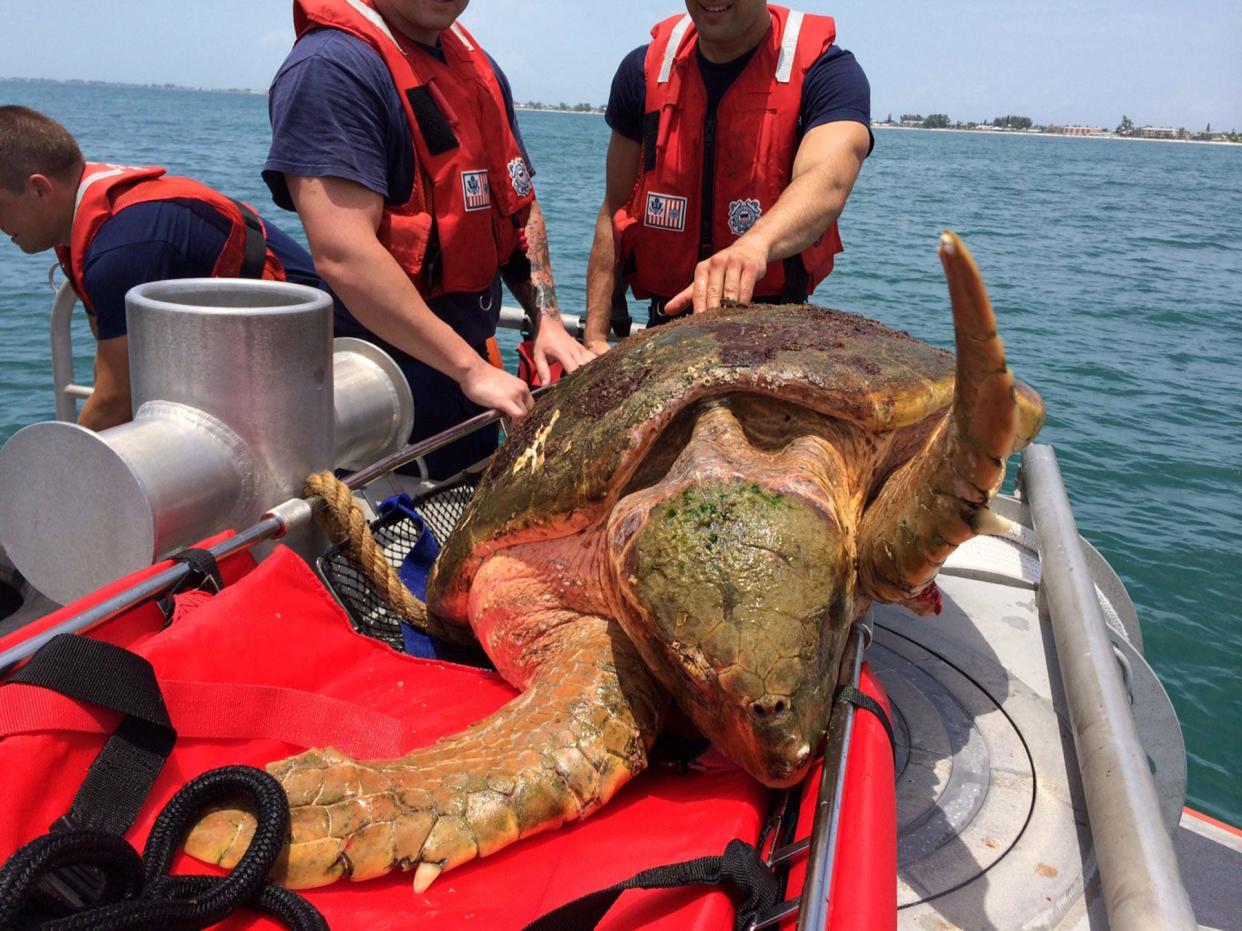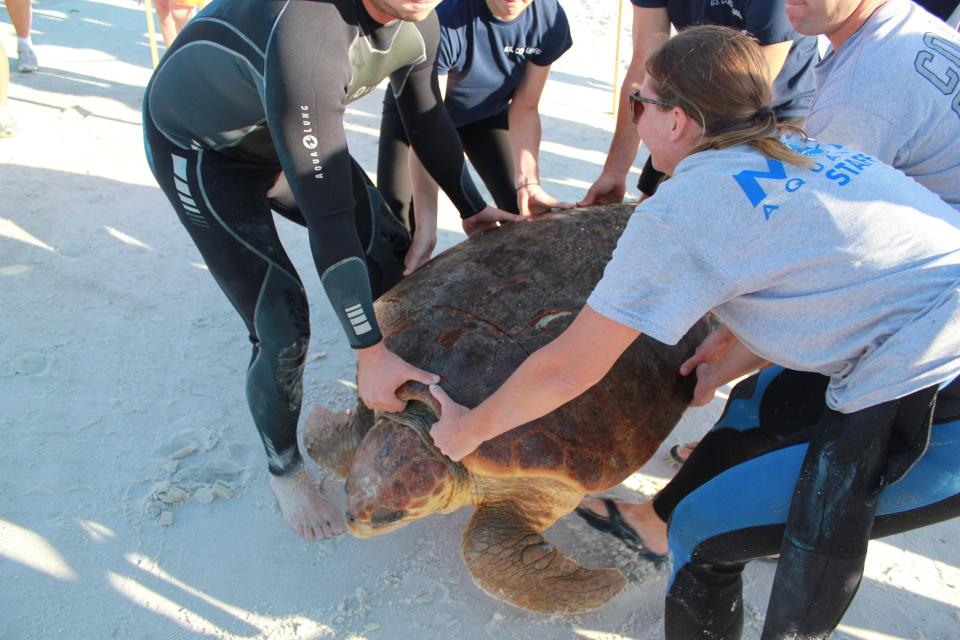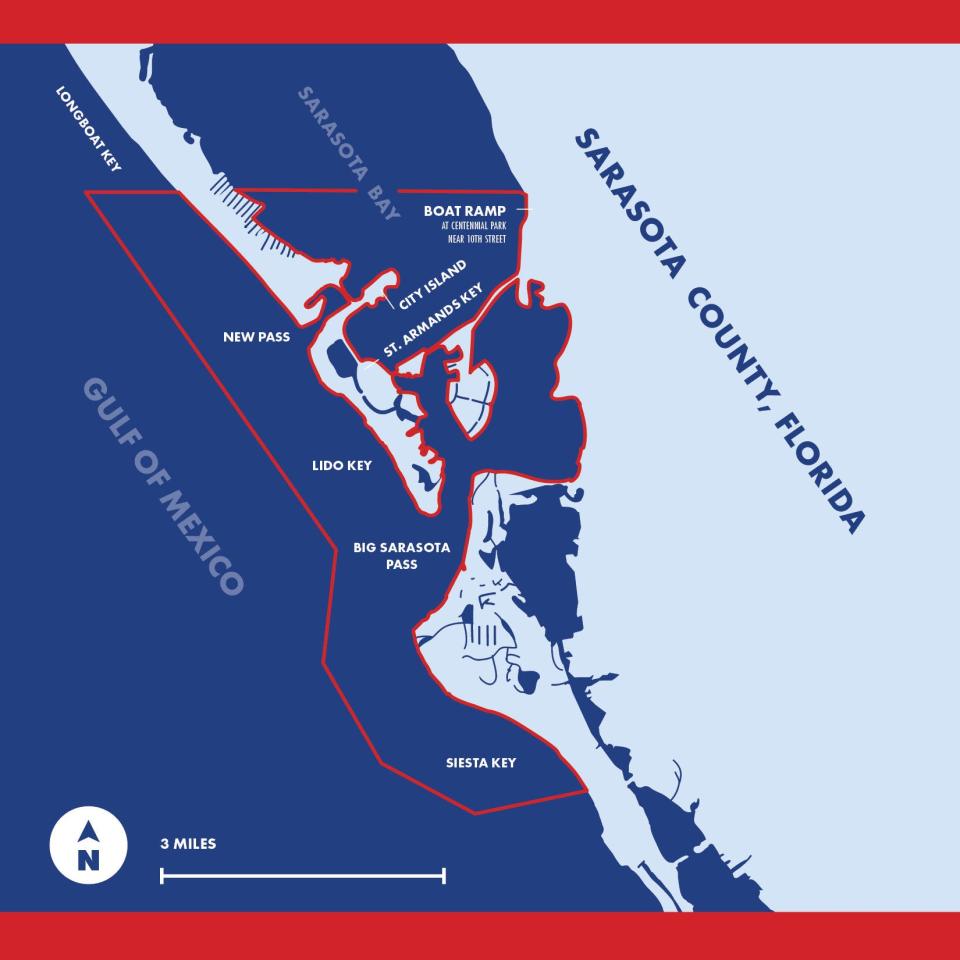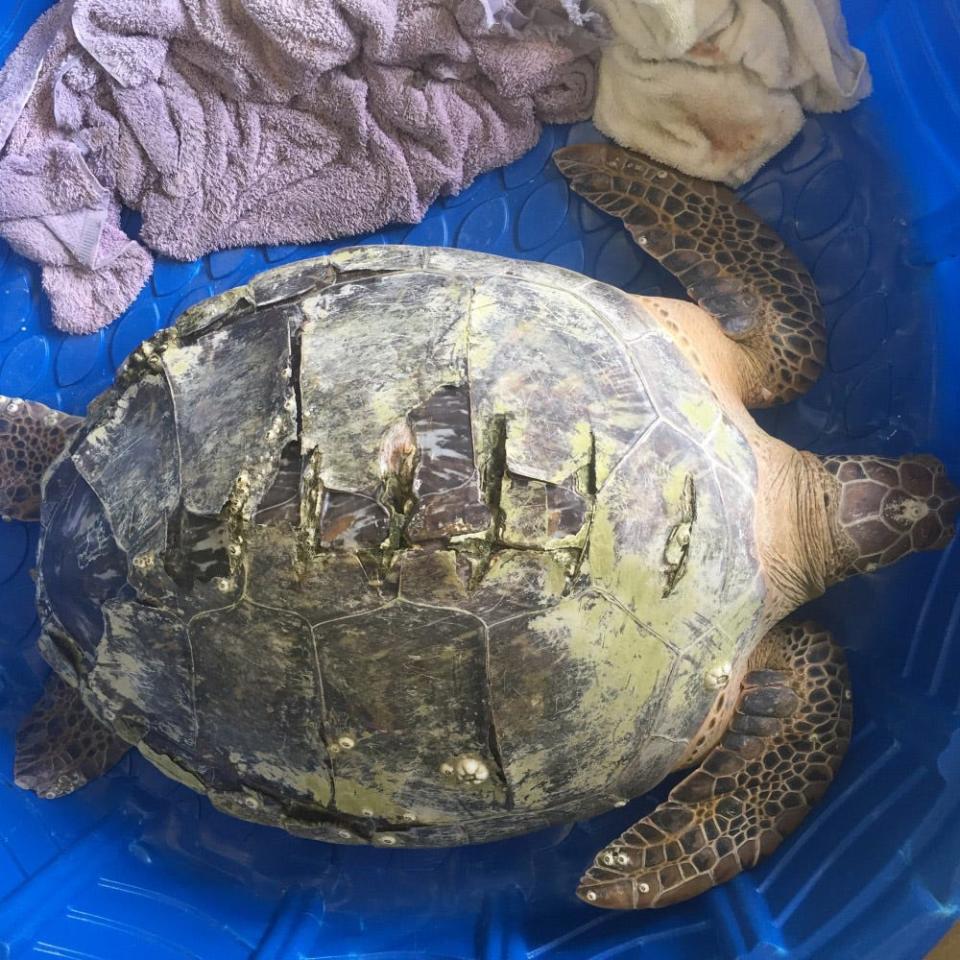Mote Marine establishes voluntary protection zone for sea turtles in Sarasota County

Mote Marine Laboratory and Aquarium has established a voluntary Sea Turtle Protection Zone in waters off Sarasota County, with the hope that increased publicity will help raise public awareness and protect sea turtles from unintended boat strikes.
The zone stretches from Longboat Key to Siesta Key, including Sarasota Bay, and extends from the shore to 1.5 miles in the Gulf of Mexico. It makes Sarasota only the second county, along with Palm Beach, where the protection zones have been established.
The push for creation of a Sea Turtle Protection Zone started in 2021 through a partnership with the Loggerhead Marinelife Center in Juno Beach and the Archie Carr Center for Sea Turtle Research at the University of Florida.
The Archie Carr Center pays for the program with money from the Disney Conservation Fund and in part by a grant awarded from the Sea Turtle Grants Program, which is funded by proceeds from the sale of the Florida Sea Turtle License Plate.
“Since the 1980s, sea turtle vessel strikes have tripled in Florida and unfortunately more than 90% of sea turtles with definitive boat strike injuries have resulted in fatalities,” Valerie Nicole Tovar, conservation manager at Loggerhead Marinelife Center, said in a prepared statement. “Our goal with the STPZ is to increase boater awareness and enlist boater voluntary compliance to decrease sea turtle injuries and deaths by creating a united front with our local boating communities. The STPZ has served as a vital tool for sea turtle conservation in Palm Beach County and will continue to do so in Sarasota.”

Sea turtles are threatened and endangered species that live year-round in southwest Florida waters.
During nesting season, they spend more time close to the surface and close to their nesting beaches, which increases the possibility of an accidental boat strike.
Nesting season runs from May 1 through Oct. 31.
The main purpose of establishing the Sea Turtle Protection Zone is to raise awareness and urge boaters to slow down and stay alert for sea turtles – especially in key locations.
In addition to the public awareness campaign, Mote scientists will use a Lidar gun paid for by the Archie Carr Center to track boat speeds within the protection zone.
Here’s what you need to know about the awareness program and what you can do to avoid striking a sea turtle:
Sea turtle release: After recovering from red tide, loggerhead turtles are released in Sarasota
In case you missed it: Mote releases 1,800 redfish in Sarasota Bay near Phillippi Creek
Coral reef restoration efforts: Caribbean king crabs arrive at Mote Aquaculture Park; seen as key to restoring coral reefs
How the zone was created
Mote Marine scientists documented boat strikes with marine mammals from 2010 to 2022 to identify hot spots and create the protection zone.

From a land perspective, the protection zone in the Gulf of Mexico extends from just north of the 10th Street Boat Ramp to the Stickney Point Road bridge.
In Sarasota Bay, that zone extends south to Siesta Key’s north bridge.
Strikes have been less frequent south of that bridge, as speeds are generally reduced, said Gretchen Lovewell, Mote’s Stranding Investigations Program Manager.
“Our hotspots for general strandings are the same hotspots where we get our boat strikes,” Lovewell said.
Boat strikes frequently become turtle fatalities
Between 2017 and 2021 Mote scientists responded to 176 boat strikes on turtles.
Only 38 of those 176 were alive.
“Most of the time when a turtle is hit by a boat, it’s going to die,” Lovewell said.
Hot spots are Longboat Pass, New Pass, Big Pass, Siesta Key, Venice Inlet, and offshore two miles north of New Pass to two miles south of Big Pass, extending out 1.5 miles.
Most of those are covered in the protection zone, which is limited in part by the ability of Mote to respond and monitor boat speeds. It may be widened in the future.

Lovewell stressed that the protection zone is voluntary.
The hope is that increased awareness and slower speeds will lead to fewer turtle deaths.
“If people slow down,” she added, “they may actually have a chance to see a cool turtle sighting.”
How to avoid turtle collisions
There’s no secret to avoiding collisions with sea turtles, or dolphins and manatees.
The biggest key experts say is to slow down – obey speed limits – and minimize time in the protection zone.
Other tips include wearing polarized sunglasses to see and avoid turtles or even ask one passenger to be the designated wildlife spotter.
Stranded sea turtles and marine mammals in the waters off of Sarasota and Manatee counties can be reported to Mote at 888-345-2335. Elsewhere in Florida, contact the Florida Fish and Wildlife Conservation Commission: 888-404-3922.
This article originally appeared on Sarasota Herald-Tribune: Sarasota County becomes second area with sea turtle protection zone

